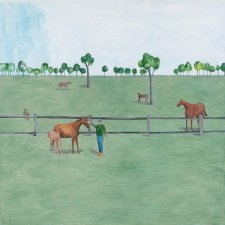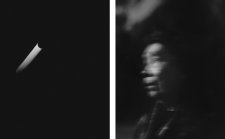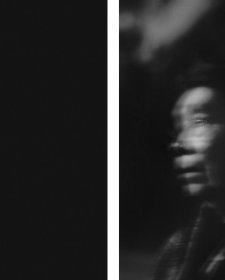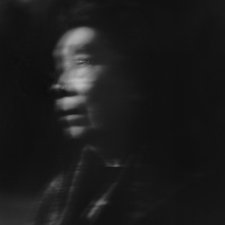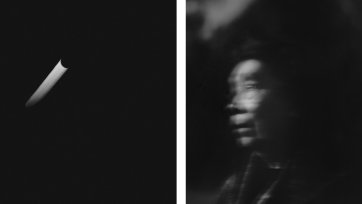The Darling Portrait Prize is a biennial national prize for Australian portrait painting honouring the legacy of Mr L Gordon Darling AC CMG. It offers a platform for artists to explore the evolving notion of Australian identity while celebrating emerging and established portrait painters. In 2024, 24 finalists were selected for the prize with the winner receiving a cash prize of $75,000.
Judges Bree Pickering (Director of the National Portrait Gallery), art critic and historian Tara Heffernan, and Erin Vink (Curator, First Nations art (local and global) at the Art Gallery of New South Wales) said McKenna’s painting is an assured, well-executed work.
“This is an energetic and unexpected portrait. The subject shares the work with animals and the landscape. It is joyous in its execution and demonstrates the skill of an established Australian artist whose practice is assured in every way.”
The National Photographic Portrait Prize celebrates established and emerging artistic talent from across the country. The works by the 34 selected finalists provide a powerful visual record of the year, reflecting a particular time in Australian culture, both socially and artistically. In 2024, the winner will receive a cash prize of $30,000 and Canon equipment valued at $20,000 courtesy of the Gallery’s Imaging Partner, Canon Australia.
This year’s judges – Isobel Parker Philip (Portrait Gallery Director, Curatorial and Collection), José da Silva (Director of Sydney’s UNSW Galleries, and curator of the 18th Adelaide Biennial of Australian Art) and Pippa Milne (Curator PHOTO Australia) – said that this year’s field was exceptionally strong. Of the winning work, the judges were taken by the sparse, yet powerful, diptych created through a tight interplay between the moon, the subject and the camera.
“Alexis Wright is a noted First Nations storyteller whose work collapses linear time and connects to ideas of the cosmos, and Gebhardt’s portrait, lit only by the moon, speaks directly to the sitter’s work. Created through a long exposure, the pair of photographs turn Wright and the moon into echoed forms. Instead of a singular snapshot in time, what is represented is an extended moment; the moon traces its passage in the sky and Wright’s eyes flicker, reflecting light back to us. The intentionality of the work’s presentation, opening like the pages of a book, can only truly be appreciated in-situ.”








